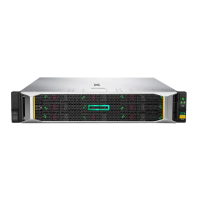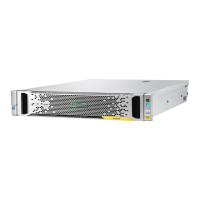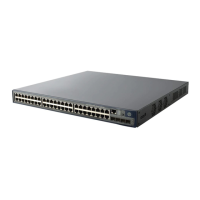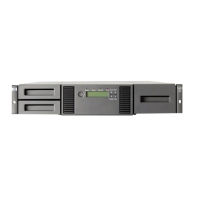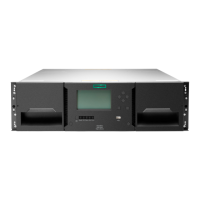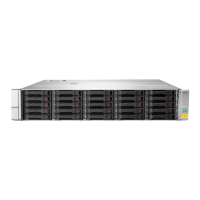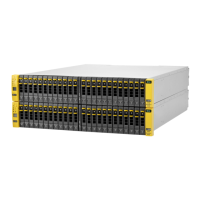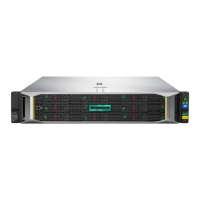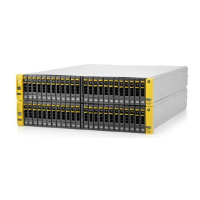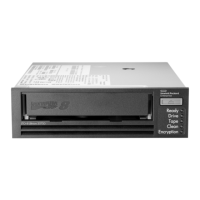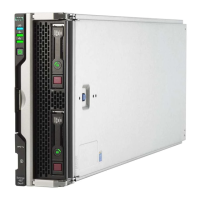The LACP protocol only works when it is configured on both the network switch and StoreOnce end of
the connection. Please refer to your switch documentation for information on LACP configuration.
• Mode 6 (Active Load Balancing)
This mode provides a load balance solution. It does not require specific external switch configuration
but does require the switch to allow ARP negotiation. It can be used in a 2–switch configuration.
This configuration is generally recommended for backup data performance and also for resiliency of
both data and management network connectivity. However, in some environments ARP packet
negotiation may be disabled within the network infrastructure, so this mode may not be appropriate.
NOTE:
When using bonded ports the full performance of bonded links are only realized if multiple host servers
are providing data, otherwise data will still use only one network path from the single server.
VLAN guidelines with StoreOnce systems
There is a fixed number of available physical NIC ports on the StoreOnce System, defined by the number
of 1 GbE ports plus 10 GbE ports, therefore there is a limit on the number of physical Subnets to which
the StoreOnce System can be directly connected. If your network requires more Subnets than this—for
example, twenty—the network administrator can define 20 VLANs, each with its own Subnet and,
typically, use a 10 GbE bonded link to the StoreOnce System as a trunk.
To do this, the network administrator sets up the switches with the necessary VLANs and identifies 20
tags. (The tag values can be any integer between range 2-4094.) The ports on the network switch to
which the StoreOnce System connects must be trunked and tagged. Then using the StoreOnce CLI or
GUI, the HPE StoreOnce administrator modifies the network configuration by first defining the Port Set for
the physical 10 GbE link and making it VLAN enabled, and then configuring each of the twenty VLAN
Subnets to use that Port Set.
The following VLAN guidelines apply:
• The user can configure up to a total of 128different VLAN Subnets on each StoreOnce System; the
VLAN Subnets may be consecutive or non-consecutive.
• The user can configure all VLAN Subnets on one Port Set or divide the VLAN Subnets over multiple
Port Sets.
• It is not permitted to configure VLAN Subnets on a Port Set that uses Mode 6 network bonding.
• Each VLAN tag interface is configured using the VLAN ID index, which is the same as the switch
VLAN ID number and must be an integer from 2 to 4094.
• Each VLAN tag interface can be configured for use with one IPv4 and one IPv6 subnet.
For example, if a VLAN tag ID was configured for use with ports eth 0 and eth1 on IPv4, it can also be
configured for use on IPv6 with that Port Set but it cannot be used with any other Port Set.
• The user can add/delete/modify the VLAN network configuration without interrupting non-affected
network configuration on the appliance.
• VLAN tagging does not increase bandwidth because the bandwidth is bound by the physical speed of
the Port Set. The number of open streams is bound by the specification for the StoreOnce appliance.
82 VLAN guidelines with StoreOnce systems
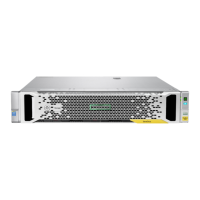
